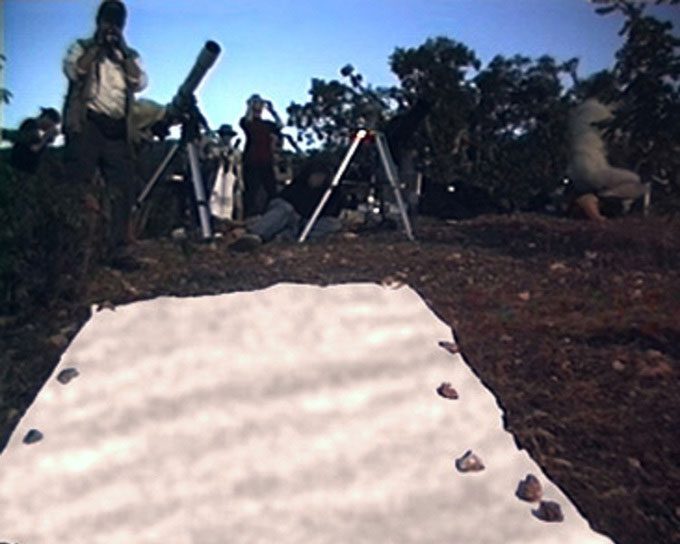For the past 180 years, experts have yet to determine the exact cause of the shimmering light and dark waves that occur when the Sun is obscured.
On April 8, the first total solar eclipse of 2024 will take place. For many, this will be a wonderful opportunity to observe the solar corona—the outer atmosphere of the Sun—as well as stars and planets that become visible during the day. However, there is another unusual phenomenon that can only be seen when the Sun shrinks to a thin line of light: shadow bands.

Simulation of shadow bands appearing as the Sun shrinks to a thin strip during a total solar eclipse. (Image: Sky and Telescope Magazine)
Shadow bands are wavy light and dark strips that can appear on uniformly colored surfaces. “It looks like being at the bottom of a swimming pool,” describes astronomer Nordgren. These shadow bands remain a scientific mystery. Astronomers do not yet know the exact cause of their appearance or why they only occur occasionally.
Among the phenomena that occur during a solar eclipse, shadow bands are perhaps the most unusual. They can sometimes be seen swiftly moving across the ground just minutes before the total eclipse phase (when the Moon completely obscures the disc of the Sun). Initially, the bands appear faint and chaotic, but as the total phase approaches, they become more orderly, with the distance between them decreasing to just a few centimeters, and they also become more distinct. After the total phase ends, the opposite occurs: the shadow bands reappear, gradually becoming fainter and more chaotic before disappearing completely.
However, during the same eclipse, observers in different locations may see different shadow band effects. Some report that it is nearly impossible to observe shadow bands, while others see them quite clearly. In some eclipses, the shadow bands are quite vivid and easily noticeable, but in others, they are very faint or completely invisible.
The scientific community cannot definitively state when shadow bands were first observed. According to the book The Story of Eclipses by amateur astronomer George F. Chambers, the phenomenon of shadow bands was documented during the eclipse on July 8, 1842. By 1878, in Colorado, USA, observers were prepared for the appearance of “diffraction bands.” The lack of observations of shadow bands before the mid-19th century may be due to many people looking up during eclipses rather than down.
Shadow bands are also very difficult to photograph. They typically appear when only about 1% of the Sun is still visible, with most of it obscured by the Moon, leading to very low light levels and contrast. The average speed of shadow bands moving across the ground is about 3 meters per second. Since these bands are often only a few centimeters wide, they can become blurred in photos or videos. Additionally, there is a physiological reason why shadow bands are often undetectable in most images: they are much easier to observe while in motion than when stationary.

Shadow bands during the total solar eclipse on June 21, 2001. (Image: Wolfgang Strickling/Wikimedia Commons).
Over the past 180 years, experts have proposed many ideas to explain shadow bands. One of the earliest explanations suggested that they are diffraction bands. This phenomenon occurs when light waves pass through a narrow slit on a solid surface, creating a dark stripe in the center and brighter stripes on either side. Later, in 1924, Italian astronomer Guido Horn-D’Arturo proposed that these bands are overlapping images of the Sun’s pinhole, formed by spriragli—gaps in the upper atmosphere of Earth.
The most reasonable explanation is likely the meteorological effect caused by sunlight being distorted by Earth’s turbulent atmosphere. This effect also distorts light from distant stars, making them appear to twinkle. Star light is distorted because, when observed from Earth, a star is just a point source of light. Bright planets like Venus or Jupiter, which are easily visible to the naked eye, are not point sources but much larger. Therefore, observers rarely see them twinkling, even when they are very close to the horizon.
Normally, the Sun and Moon do not twinkle. However, during an eclipse, when the disc of the Sun is reduced to a thin line of light, each point along this line appears to twinkle like a star. Thus, shadow bands may result from the light emitted from each point. Some experts suggest that the poorer the observing conditions through a telescope (due to atmospheric distortion), the more vivid the shadow bands appear.


















































